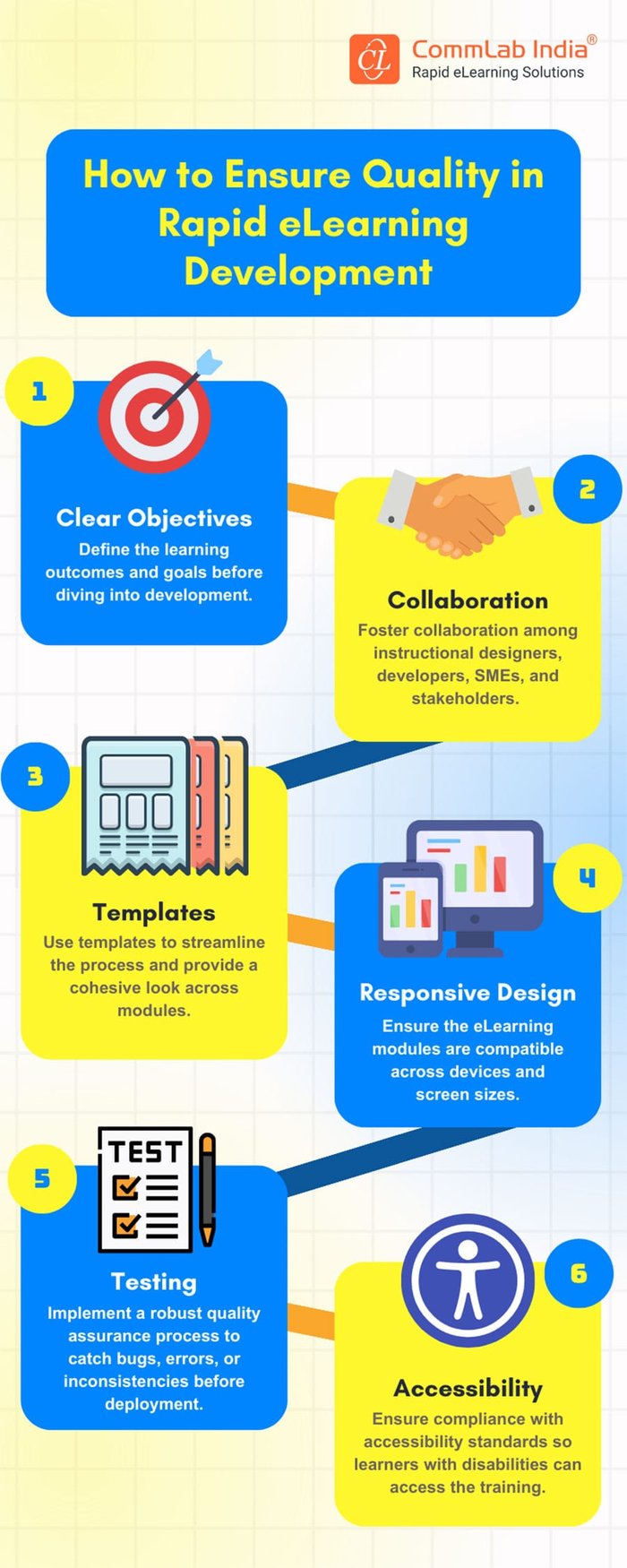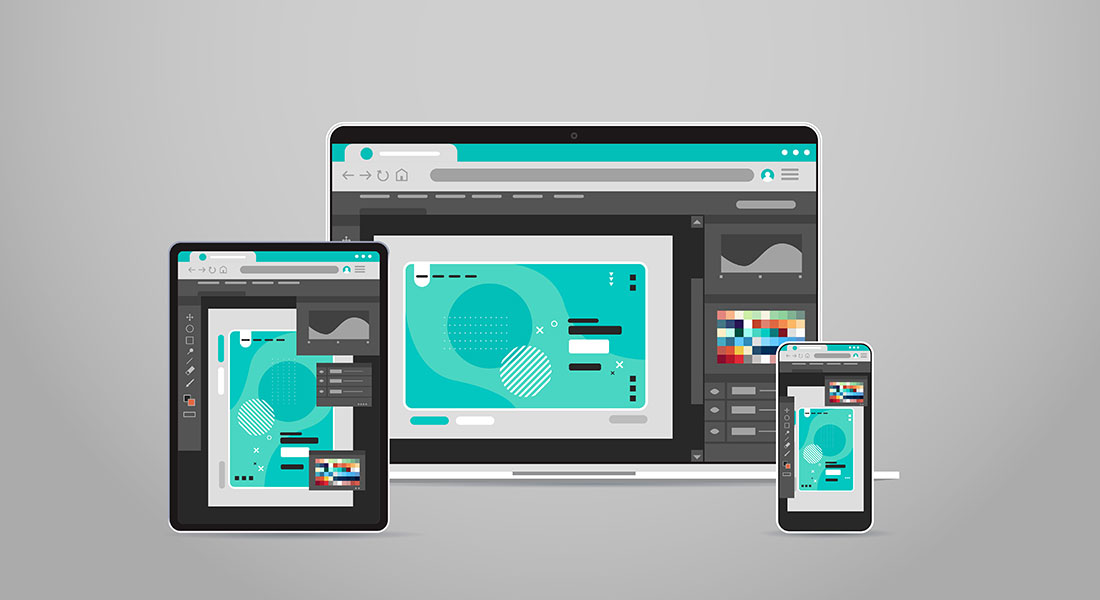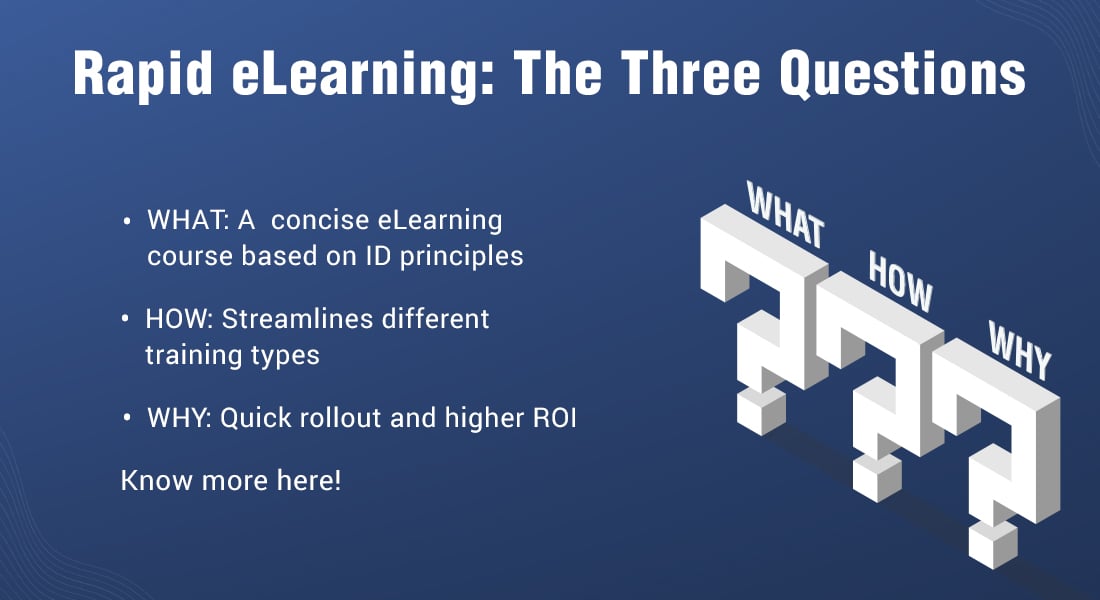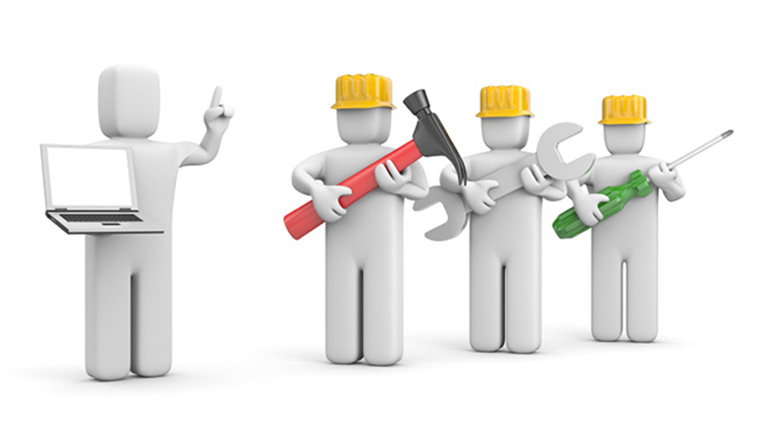6 Tips to Achieve Quality in Rapid eLearning Development [Infographic]
![6 Tips to Achieve Quality in Rapid eLearning Development [Infographic] 6 Tips to Achieve Quality in Rapid eLearning Development [Infographic]](https://blog.commlabindia.com/hubfs/blogs/rapid-elearning-development-quality-infographic.jpg)
Rapid eLearning is not synonymous with compromising on quality or instructional design. It does not entail sacrificing creativity, nor does it dismiss the importance of efficient project management. Rapid eLearning, when executed effectively, harmonizes speed with quality, ensuring engaging and impactful learning experiences.
Let’s explore more about it.
What is Rapid eLearning?
Rapid eLearning involves the rapid development of eLearning courses, utilizing authoring tools to streamline the process. It prioritizes efficiency while maintaining adherence to instructional design principles. Despite misconceptions, rapid eLearning upholds course quality without compromise.
Understanding Rapid eLearning Content Development — What Goes in it?
Rapid eLearning content development involves leveraging pre-existing templates and authoring tools to expedite the course creation process. Additionally, rapid eLearning often focuses on essential content delivery, emphasizing key learning objectives and minimizing extraneous details.
Furthermore, rapid eLearning content development typically involves collaboration between instructional designers, subject matter experts, and developers to ensure a streamlined workflow. This prioritizes quick iteration and feedback cycles, allowing for quick adjustments and improvements throughout the development process. By adopting agile processes and leveraging available resources effectively, organizations can produce high-quality eLearning content in shorter timeframes.
Why is Quality Important in Rapid eLearning Development?
Quality is crucial in rapid eLearning development because it directly impacts the effectiveness and success of the learning experience. Despite the rapid pace of development, maintaining high standards of quality ensures that the content is engaging, informative, and conducive to learning. When quality is prioritized, learners are more likely to stay engaged, retain information, and apply their knowledge effectively. Additionally, high-quality rapid eLearning content enhances the reputation and credibility of the organization in the eyes of learners and stakeholders alike. Therefore, while speed is essential in rapid eLearning development, it should never come at the expense of quality.
→ Download Now: Have You Met the 4 Rs of Rapid eLearning? [eBook]
Balancing Quality and Speed in Rapid eLearning Development — A Challenge?
The tussle between quality and speed usually persists in rapid eLearning development. But why pit them against each other when they can go hand in hand harmoniously?
In eLearning development, where timelines are tight and expectations are high, finding ways to achieve both quality and speed is crucial. It's about adopting strategies that prioritize efficiency without sacrificing the integrity and effectiveness of the learning experience.
Strategic planning, advanced eLearning authoring tools, and thoughtful execution bridge the gap. So, let's embrace both—the sprinter's pace and the maestro's precision with rapid eLearning!
Ensuring High-Quality in Rapid eLearning Development —How to Go About it?
Taking the Right Course of Action!
In the race to stay relevant, rapid eLearning emerges as the agile champion. It's about rapid solutions without compromising quality. Flexibility is rapid eLearning’s forte—tweak, expand, and update your eLearning courses without any hassle! To make your rapid eLearning development seamless, discover the 4R strategy in our eBook and explore expert strategies for effective rapid eLearning development. Download now!







